Hatchbacks
2020 Kia Rio GT-Line: Private Fleet Car Review.
This Car Review Is About: Kia’s second smallest car, complete with attitude and spunk. It’s a bit like “it’s not the size of the dog in the fight, it’s the size of the fight in the dog”. Complete with a three cylinder engine and DCT, plus some body add-ons, and in the review car’s case, an eye-catching Mighty Yellow paint, how much fight is in this pint size warrior wannabe? How Much Does It Cost?: $24,490 drive-away plus $520 for premium paint.
How Much Does It Cost?: $24,490 drive-away plus $520 for premium paint.
Under The Bonnet Is: A relatively tiny 1.0L three cylinder with the Hyundai/Kia Smartstream label. But don’t think it’s too small for the Rio. 74kW and 172Nm (1,500 to 4,000rpm) combine to foist upon the 1,197kg (dry) machine enough pizzazz and spriteliness to provide enough of a grin factor when the car is driven…ahem…appropriately. It’s cheap to run as well; our worst was 7.0L/100km, with a best of 4.1L/100, with a final average of 6.2L/100km. Tank size is 45L worth for regular unleaded. None of those figures are far from Kia’s official figures of 5.3L/6.3L/4.8L per 100km on the combined/urban, and highway drives. And not that many would, but towing is rated as 1,000kg. Transmission is a seven ratio Dual Clutch Transmission.
It’s cheap to run as well; our worst was 7.0L/100km, with a best of 4.1L/100, with a final average of 6.2L/100km. Tank size is 45L worth for regular unleaded. None of those figures are far from Kia’s official figures of 5.3L/6.3L/4.8L per 100km on the combined/urban, and highway drives. And not that many would, but towing is rated as 1,000kg. Transmission is a seven ratio Dual Clutch Transmission.
On The Outside It’s: Largely unchanged for the past couple of years. It sits nicely in the compact class at 4,070mm in length although it looks smaller. It’s 1,450mm high, and 1,725mm wide, sitting on a wheelbase of 2,580mm.
That means it’s a stubby little thing with short overhangs, and slightly cubical when seen from either end directly. In profile the A-pillars have a slope that matches the rear pillar, bringing some visual balance to the main body.
Driving lights are the four-cube set, cast to either end of the front bar and in an enclosure limned in black that reaches out but doesn’t quite meet a slim air intake sitting under the main slimline tiger-nose. This is echoed with a mirror set in the rear bumper that has a pair of reflectors.
Wheels are 16 spoke 17 inch alloys with dark grey highlights, shod in Continental Contisport Contact rubber at 205/45. On The Inside It’s: Quite sparsely trimmed. The seats are a black cloth with white stitched leather bolstering, white piping, and fully manually adjustable. No electronics at all. Pedals are alloy, and a carbon-fibre look inlay runs full length across the dash. Otherwise, plastics are a bit low-rent to look at and touch aside from the piano black for the air vent, touchscreen, and drive selector surrounds.
On The Inside It’s: Quite sparsely trimmed. The seats are a black cloth with white stitched leather bolstering, white piping, and fully manually adjustable. No electronics at all. Pedals are alloy, and a carbon-fibre look inlay runs full length across the dash. Otherwise, plastics are a bit low-rent to look at and touch aside from the piano black for the air vent, touchscreen, and drive selector surrounds.
Driver’s dials are analogue with the familiar 4.2 inch info cluster. Here is where a digital screen would have been a nice step up. Aircon controls are basic yet idiot-proof dials and push-buttons, sitting over a 12V & USB port. A sole USB port sits at the end of the small centre console. The main touchscreen is an 8.0 inch unit in glorious monochrome, featuring AM, FM, and Bluetooth along with Android and Apple compatibility. Convenience features run to bottle holders in each door, a pair of console cup holders, and rain sensing wipers. No airvents for the rear seaters though… Luggage space is 325L to 980L, with the second row seats folding but not level with the boot floor. That’s not quite enough for a weekly shop for a family of four, but then, the Rio GT-Line probably wouldn’t be in a driveway for that demographic.
Convenience features run to bottle holders in each door, a pair of console cup holders, and rain sensing wipers. No airvents for the rear seaters though… Luggage space is 325L to 980L, with the second row seats folding but not level with the boot floor. That’s not quite enough for a weekly shop for a family of four, but then, the Rio GT-Line probably wouldn’t be in a driveway for that demographic.
Solar or UV blocking glass is standard for the GT’s front three windows, with privacy glass for the rears. A drive mode tab is placed up towards the drive selector, with Eco, Normal, and Sport the choices. There’s a sporting hint with the now familiar flat bottomed tiller. Packaging overall is good thanks to the slightly boxy body shape.
 On The Road It’s: Much better in Normal mode than Eco. There’s more life, lighter steering, whereas Eco drags the Rio GT-Line into the mud and everything feels heavier and slower. Sport mode adds extra zip and especially in the mid-range of the engine’s torque delivery. In Eco, the steering has a feel of the front tyres being deflated. Switch to Normal and it lightens up just enough to feel…well…normal.
On The Road It’s: Much better in Normal mode than Eco. There’s more life, lighter steering, whereas Eco drags the Rio GT-Line into the mud and everything feels heavier and slower. Sport mode adds extra zip and especially in the mid-range of the engine’s torque delivery. In Eco, the steering has a feel of the front tyres being deflated. Switch to Normal and it lightens up just enough to feel…well…normal.
The seven speed DCT isn’t one of the better of its type, nor is it one of the worst. The clutch gaps aren’t as bad as it has been, with stop then start driving feeling more intuitive and natural. And safer. It also makes for normal and sportier driving a much more enjoyable experience, as changes are sharper, crisper, and more efficiently translating into getting the Rio percolating.
Engage Sport and it’s even swifter, however switching to manual changing (no paddle shifters either, by the way) and there’s a hint more speed in the cogs swapping. Under a gentle foot there is also the audible changes for the gears, with the three cylinder thrum that is so characteristic of these engines running up and down in the revs as the clutch disengages and re-engages for the next ratio. Some DCTs take time to warm up and perform at their best, Kia’s is somewhere between that and being ready to go from the get-go. Ride quality is where the Rio GT-Line varies. It’s too hard sometimes, with little travel and tyre absorption. There’s just that little bit too much bang-crash on some road surfaces, but in contrast nicely dials out any float, with zero rebound on those wallowy surfaces. There is ample grip from the Continental rubber too, making cornering at increasing speed a simple proposition, alongside easy lane changing.
Ride quality is where the Rio GT-Line varies. It’s too hard sometimes, with little travel and tyre absorption. There’s just that little bit too much bang-crash on some road surfaces, but in contrast nicely dials out any float, with zero rebound on those wallowy surfaces. There is ample grip from the Continental rubber too, making cornering at increasing speed a simple proposition, alongside easy lane changing.
Hit a flat road and it’s ideal, feeling tied to the tarmac, and it’s on this kind of surface where the GT part of GT-Line pays off. Ditto for the engine as that broad swathe of torque effortlessly pulls the GT-Line along. The steering is almost ideally weighted, with little effort needed to switch lanes. Road noise is noticeable but not to the point that cabin conversations feel intruded upon.
What was apparent, too, was the rate of rolling acceleration. Where a merge road goes from 80 to 100 or 110, a change of pace, rapidly, is needed. Here the Rio GT-Line shows appreciable agility without being a neck-snapper, with decent forward progress. It’s perhaps where the 1.2L three with more torque would be a better fit for the name GT-Line. What About Safety?: Autonomous Emergency Braking with Forward Collision Warning, Lane Following and Lane Keeping Assist. Six airbags, and the mandated assorted electronic driver aids are standard.
What About Safety?: Autonomous Emergency Braking with Forward Collision Warning, Lane Following and Lane Keeping Assist. Six airbags, and the mandated assorted electronic driver aids are standard.
What About Warranty And Service?: Kia’s standard seven year warranty applies. Total service costs across the seven years is $3,299. That’s an average cost per year of $471 or just nine dollars per week. As is the norm, it’s service four for the big ticket cost at $704, with year five under half that at $319. Year six and seven see $602 and $569.
At The End Of The Drive. Kia’s Rio GT-Line isn’t aimed at the hot hatch market. It’s not aimed at the warm hatch market. It’s aimed at those that want a semblance of performance combined with user friendly economy figures and no need for anything bigger. It’s an ideal first car for the new driver as it’s not excessively endowed with snap/crackle/pop BUT there is enough to provide the appropriate grin factor.
As such, the Kia Rio GT-Line offers up a decent amount of fight however those looking for something with more spice will look elsewhere. That’s no shade on the GT-Line, by the way. It’s intended to be what it is and it fulfills that particular brief perfectly. Check it out, here.
Mini’s Hot Secret!
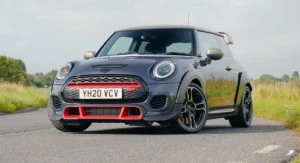
MINI JCW GP
There is one other Mini that might have flown in under your radar. It is the wildest Mini hot hatch yet, and it’s called the Mini John Cooper Works GP. The car looks really cool and boasts the highest price tag of any Mini yet – but for good reason.
It was built as a JCW GP 60th year birthday present for Mini, and it sits low down on a 40 mm wider track. The massive grille, bold GP badge, massive front spoiler and two large air foiling scoops just give the car a special presence that is brutal and focused. The air intake slot in the bonnet is large and ready to suck in gallons of air to help spool the turbo.

Look at the Mini JCW GP hot-hatch side on, and the chunky styling looks awesome, mean and racy. It features huge wheel arches, massive side skirts and an enormous spoiler. The car is also lower than standard JCW cars.
Head around the back, and you note that the spoiler has also been skilfully incorporated into the roof guttering showing a nice level of attention to detail. The taillights have been darkened and the twin exhaust outlets poke aggressively out from the centre of the rear skirt. These crackle and pop with full throttle and under serious braking. What a car!
Inside, the racy Mini JCW GP is fairly simple. It boasts nice leather bucket seats, a digital dash, 3-D printed panels with an array of options for logos and displays. A special ‘GP pack’ adds all the comfort and bells and whistles like heated seats and dual zone climate control, but remember this is a stripped out limited edition racer that comes standard with just the two seats. A horizontal strut brace takes up where the rear seats would normally sit.
So just 3000 units will be made worldwide, and 65 of those will make the journey to Australia – and they have almost certainly already been sold to their lucky owners. They are around $12,500 more expensive than a ‘regular’ John Cooper Works, so I’d imagine if you did own one and tried to sell it now, you could fetch even more than the original price.
The Mini JCW GP is significantly more expensive than more generously equipped hot hatch rivals such as the Volkswagen Golf R ($56,990); but who cares – the car is a phenomenal performer and it is a limited edition. The new John Cooper Works GP is driven by a special version of BMW’s 2.0-litre turbo engine with an output of 225 kW of power and 450 Nm of torque available. Just the eight-speed automatic with paddle shifters is available, however this set-up ensures that the power is delivered precisely on time – every time. Mini has developed a unique suspension for the GP, designed to make it even faster around a racetrack than the standard JCW Hatch. Mini claims the FWD JCW GP hot-hatch will do the 0-100 km/h dash in just 5.2 seconds. This is just the start of the rush of power and acceleration that goes on to a governed top speed of 265 km/h. This is very quick indeed! The FWD power is controlled with a limited slip-diff.
You’ll want to keep your ear to the ground and see if you can find a seller of the wonderful little Mini JCW GP ‘hottie’. It’s distinctively different and extremely aggressive, and you’re in for a thrilling and wild ride.
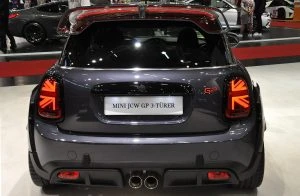
Mini’s Hottest Hatch
Big Boots Matter
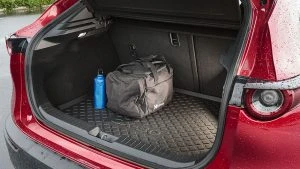
Luggage Space
If size matters to you when it comes to what you can (or can’t) fit in your boot, then how much space is commonly available in popular new car buys? The chances are you’ll want to know, so first are some of the most popular vehicles bought in Australia and their boot volume (litres). All the vehicles listed have their rear seats in place, because we all know the greatest vehicles carry a decent amount of luggage without having to flip their rear seats flat. There’s nothing worse than telling little Johnny that he can’t travel with his mates because the split folding rear seats have been split folded to take the school camp food!
At the end is a list of the best picks for carrying 550 litres or more behind the rear seats. You might be surprised, or not…
Supermini
Average boot space: 340.88 litres
1/ Renault Clio – 395 litres
2/ Honda Jazz – 354 litres
3/ Volkswagen Polo – 351 litres
Audi A1 – 335 litres
Skoda Fabia – 330 litres
Hyundai i20 – 326 litres
Kia Rio – 325 litres
Peugeot 208 – 311 litres
Hatchbacks
Average boot space: 479.40 litres
1/ Skoda Octavia 590 litres
2/ Peugeot 308 501 litres
3/ Honda Civic 492 litres
Renault Megane 434
VW Golf 380 litres
Small 4-door sedan
Average boot space: 464.75 litres
1/ Honda City | 536 litres
2/ Honda Civic | 519 litres
3/ Renault Megane | 503 litres
Kia Cerato | 502 litres
Toyota Corolla | 470 litres
Hyundai Accent Sport | 465 litres
Hyundai Elantra | 458 litres
Holden Astra | 445 litres
Mazda 3 444 litres
Audi A3 | 425 litres
Mazda 2 410 litres
Mitsubishi Lancer | 400 litres
Medium 4-Door Sedan
Average boot space: 501.82 litres
1/ Volkswagen Passat | 586 litres
2/ Skoda Octavia | 568 litres
3/ Toyota Camry | 524 litres
Kia Optima | 510 litres
Hyundai Sonata | 510 litres
Subaru Liberty | 493 litres
BMW 3 Series | 480 litres
Mazda 6 | 474 litres
Subaru Impreza | 460 litres
Ford Mondeo | 458 litres
Honda Accord | 457 litres
Large 4-Door Sedan
Average boot space: 509.2 litres
1/ Skoda Superb | 625 litres
2/ Volkswagen Arteon | 563 litres
3/ Holden Commodore | 490 litres
Chrysler 300 | 462 litres
Kia Stinger | 406 litres
Station wagons
Average boot space: 560.9 litres
1/ Holden Sportwagon 895 litres
2/ Skoda Superb 660 litres
3/ Peugeot 308 SW 660 litres
Ford Focus SW 608 litres
VW Golf SW 605 litres
Hyundai i30 SW 602 litres
Audi A6 SW 586 litres
Volvo V70 575 litres
BMW 5-Series SW 570 litres
Jaguar XF SW 565 litres
Kia Optima SW 552 litres
Ford Mondeo 541 litres
Mercedes Benz E-Class 540 litres
Subaru Levorg 522 litres
Mazda 6 SW 522 litres
Renault Megane SW 521 litres
Subaru Outback 512 litres
Peugeot 407 430 litres
Toyota Corolla SW 392 litres
Mini Clubman SW 360 litres
SUVs
LIGHT SUVs
Average boot space: 346.2 litres
1/ Citroen C3 Aircross – 410 litres
2/ Holden Trax – 356 litres
3/ Hyundai Venue 355 litres
Ford EcoSport – 346 litres
Mazda CX-3 264 litres
SMALL SUVs
Average boot space: 385.91 litres
1/ Jeep Compass 438 litres
2/ Honda HR-V 437 litres
3/ Kia Seltos 433 litres
Nissan Qashqai 430 litres
Renault Kadjar 408 litres
Mitsubishi ASX 393 litres
Toyota C-HR 377 litres
Hyundai Kona 361 litres
Mitsubishi Eclipse Cross 341 litres
Mazda CX-30 317 litres
Subaru XV 310 litres
MEDIUM SUVs
Average boot space: 496.67 litres
1/ Volkswagen Tiguan 615 litres
2/ Toyota RAV4 580 litres
3/ Nissan X-Trail 565 litres
Honda CR-V 522 litres
Subaru Forester 498 litres
Hyundai Tucson 488 litres
Mitsubishi Outlander 477 litres
MG HS 463 litres
Renault Koleos 458 litres
Kia Sportage 446 litres
Mazda CX-5 442 litres
Ford Escape 406 litres
LARGE SUVs
Average boot space: 669.50 litres
1/ Holden Acadia 1042 litres
2/ Holden Equinox 846 litres
3/ Mazda CX-9 810 litres
Toyota LandCruiser Prado 620 litres
Hyundai Santa Fe 547 litres
Toyota Kluger 529 litres
Subaru Outback 512 litres
Ford Everest 450 litres
Keep in mind that most vehicles we buy now do have split folding rear seats, so when we don’t have to carry passengers we can make use of the rear seat space in exchange for carrying cargo/luggage. Many of us don’t want to have to use the rear seat space for luggage; often the back seats are occupied with passengers anyway, so the vehicles that provide over 500 litres behind the back seats are going to be the ones that offer excellent luggage space.
If we look at averages alone, the Large SUV is easily king for luggage carrying duties. Most are seven-seater SUVs, too; but make it just the 5 seats, and they can only be a win/win combination. The next step up would be a van!
However, both the Station Wagon and Large sedan are other excellent options for you to go to for decent luggage carrying ability. Even the Medium Sedan offers some cars that provide excellent big boots: the Volkswagen Passat (586 litres), Skoda Octavia (568 litres) and the Toyota Camry (524 litres) are the best examples.
One thing that did surprise me was that the boot space in a small SUV isn’t much to write home about; its average for the class being a dismal 385.91 litres. This dropped to an abysmal 346.2 litres for light SUVs. These vehicles, and smaller are best avoided if decent boot space is what you need.
Any vehicle that can offer at least 550 litres of luggage space in the boot without having to fold down any of the rear seats is a winner for cargo carriers. If you are looking for a vehicle (that isn’t a van) that will deliver good boot space (550 litres or more) for things like: school bags, computer equipment, sport gear, holiday luggage etc., then you’ll probably need one of the following vehicles:
Hatchback:
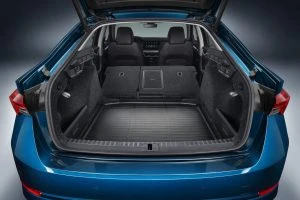
Skoda Octavia Hatchback
Skoda Octavia Hatchback 590 litres
Medium 4-dr Sedan:
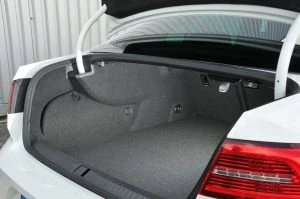
VW Passat Sedan
Volkswagen Passat 586 litres
Skoda Octavia 568 litres
Large 4-dr Sedan
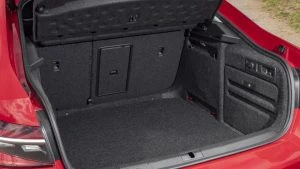
Skoda Superb Sedan/Hatch
Skoda Superb 625 litres
Volkswagen Arteon 563 litres
Station Wagon

Holden Commodore Sportwagon
Holden Sportwagon 895 litres
Skoda Superb 660 litres
Peugeot 308 660 litres
Ford Focus 608 litres
VW Golf 605 litres
Hyundai i30 602 litres
Audi A6 586 litres
Volvo V70 575 litres
BMW 5-Series 570 litres
Jaguar XF 565 litres
Kia Optima 552 litres
Medium SUV
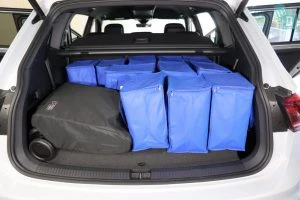
VW Tiguan SUV
Volkswagen Tiguan 615 litres
Toyota RAV4 580 litres
Nissan X-Trail 565 litres
Large SUV
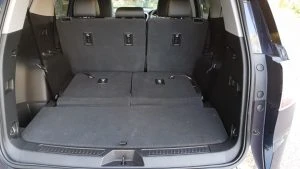
Holden Acadia 7-seater
Holden Acadia 1042 litres
Holden Equinox 846 litres
Mazda CX-9 810 litres
Toyota LandCruiser Prado 620 litres
Hyundai Santa Fe 547 litres
2020 Suzuki Ignis GLX: Private Fleet Car Review.
 This Car Review Is About: Suzuki’s ultra-cool micro SUV, the Ignis. Reborn in 2016 from the original model of the early noughties, the sub-compact machine with hints of Swift has been given a minor visual tickle for its 2020 iteration. It’s a two trim machine with GL and GLX specifications.
This Car Review Is About: Suzuki’s ultra-cool micro SUV, the Ignis. Reborn in 2016 from the original model of the early noughties, the sub-compact machine with hints of Swift has been given a minor visual tickle for its 2020 iteration. It’s a two trim machine with GL and GLX specifications.
How Much Does It Cost?: In Pure Pearl White, on the manual GL, it’s $18,990. The GL Auto is $19,990 in the same colour, with the GLX an auto only at $20,990. Metallics add $595 to the GL and GLX. Prices are driveaway.
Under The Bonnet Is: Suzuki’s willing 1.2L Dualjet four potter. The 16V donk offers up 66kW at 6,000rpm and torque of120Nm at 4,400rpm. The auto is a CVT with a button activated Sport mode on the selector and a Low range fixed gear that’s ideal for hauling the 865kg (dry) machine up hill and down dale. Well, more up hill than anything. Economy from the teacup sized 32L tank is rated as 4.9L/100km on the combined cycle for the auto. On a very easy highway run, we got a best of 5.5L/100km.
It’s here we need to point out that our review car had just 26 kilometres under the tyres, so no doubt figures would look better as the drivetrain loosens up. On the Outside Is: A choice of the new additions to colour palette, with Ivory, Khaki (as seen on the review vehicle supplied by Suzuki Australia), and Black, alongside the existing Red, Grey, and White. The external amendments see a restyle front and rear bumper, and the blacked out grille has chrome limned inserts for a fresh look. The GLX has driving lights in the lower quarters of the front bar sitting under cheeky looking LED limned headlights. Wheels and tyres are 175/60/16 Bridgestone Ecopia for the GLX, 175/65/15s on the GX. The rear flanks have defining strakes, the wheel arches have a good flare (which makes us wonder if some bigger wheels would look even better) and have polyurethane black linings for contrast.
On the Outside Is: A choice of the new additions to colour palette, with Ivory, Khaki (as seen on the review vehicle supplied by Suzuki Australia), and Black, alongside the existing Red, Grey, and White. The external amendments see a restyle front and rear bumper, and the blacked out grille has chrome limned inserts for a fresh look. The GLX has driving lights in the lower quarters of the front bar sitting under cheeky looking LED limned headlights. Wheels and tyres are 175/60/16 Bridgestone Ecopia for the GLX, 175/65/15s on the GX. The rear flanks have defining strakes, the wheel arches have a good flare (which makes us wonder if some bigger wheels would look even better) and have polyurethane black linings for contrast.
Length is just 3,700mm, with a boxy 1,660mm x 1,595mm width and height riding on a wheelbase of 2,435mm that enables a turning circle of just 9.4 metres. The SUV-like stance comes from a ride height of 180mm. The petite five door machine has an approach angle of 20 degrees and departure of 38 degrees. On The Inside Is: A basic yet tidy layout and one that admirably suits purpose. Manually operated seats, a single push for down for the driver’s window, plain but not untasteful plastic trim, and Suzuki’s nicely laid out touchscreen greet the passengers. For the driver is a simple but cool looking dual dial display and a monochrome info screen on the right. Access to this is via a tab underneath or a steering wheel button on the tilt only column. This shows consumption, clock, fuel level remaining, and also provides access to some of the basic car settings.
On The Inside Is: A basic yet tidy layout and one that admirably suits purpose. Manually operated seats, a single push for down for the driver’s window, plain but not untasteful plastic trim, and Suzuki’s nicely laid out touchscreen greet the passengers. For the driver is a simple but cool looking dual dial display and a monochrome info screen on the right. Access to this is via a tab underneath or a steering wheel button on the tilt only column. This shows consumption, clock, fuel level remaining, and also provides access to some of the basic car settings.
Audio, like the Swift Sport, is AM/FM only, however the GLX has a pair of tweeters over the GL’s rather pauper like door-only drivers.
The main seat padding is a pleasant black and white stitch with a charcoal bolstering. They’re supportive enough and on a round trip of close to 200km didn’t leave the driver feeling physically worn. The colour matches the plastics, with the lower half of the cabin in black with light gunmetal grey door grips. The dash has a bone coloured strip which complements the light grey cloth for the pillars and roof lining. Auxiliary ports sit underneath the touchscreen for 12V and USB. It’s a clean look here and mirrors what the Ignis is all about. Each door has a bottle holder, cup holders are two up front and one in the rear of the centre console, between the front seats. The rear seat folds easily to increase the cargo pocket from 264L to 516L (measured to the window) or a full 1104L if packing to the roof.
Each door has a bottle holder, cup holders are two up front and one in the rear of the centre console, between the front seats. The rear seat folds easily to increase the cargo pocket from 264L to 516L (measured to the window) or a full 1104L if packing to the roof. On The Road It’s: A shining example of expectations being met. The Ignis is not intended to be anything other than a very good city car and it meets that purpose head on. The CVT is, for want of a better few words, not the best in smoothness, with whines, clunks, indecisive movement but it works for the Ignis. It harnesses what torque there is and uses it effectively enough. No, acceleration isn’t rapid, with a 0-100kmh time measured in days but it runs along just fine, at just under 2,000rpm, at the highway limit. There’s the initial grab at a gear, as such, with the accompanying whine and a long sliiiiiiiiiiiiiiiiiiide into the next ratio, such as there is.
On The Road It’s: A shining example of expectations being met. The Ignis is not intended to be anything other than a very good city car and it meets that purpose head on. The CVT is, for want of a better few words, not the best in smoothness, with whines, clunks, indecisive movement but it works for the Ignis. It harnesses what torque there is and uses it effectively enough. No, acceleration isn’t rapid, with a 0-100kmh time measured in days but it runs along just fine, at just under 2,000rpm, at the highway limit. There’s the initial grab at a gear, as such, with the accompanying whine and a long sliiiiiiiiiiiiiiiiiiide into the next ratio, such as there is.
There’s a subtle but noticeable clunk as that change happens, and a less prolonged whine this time around. A sensation of a third change and the CVT has done its job. A flattening of the right foot has a hesitation whilst the CVT thinks momentarily, then it’s noticeable change in harmonics, a slight clunk, and the Ignis sees some extra pace. It’s the same with the Sport mode; a gentle press has the S in the digital screen light up, and there’s a noticeable change in the tone of the engine and the transmission. The feeling in the drive is slightly smoother and it’s a semblance of increase in speed in the context of what the Ignis delivers otherwise.
There’s not a lot in the brakes, primarily because the Ignis doesn’t need it thanks to being so light. Vented discs up front are supported by drums with front and rear pads inside. the pedal has decent feel and it takes no time at all for a driver to get the feel of just how much pressure is needed. The steering is the same. It’s not the last word in conversational yet there’s still enough for a driver to get some good feedback from the front driven wheels. Ditto the suspension. It’s compliant enough for most road surfaces but on one particular section of road, noted for testing the absorption rates thanks to a rise in the tarmac that descends into a paved section momentarily, virtually every car will crash to the bumpstops and the Ignis is no orphan here. However it recovers quickly and doesn’t deviate from the straight-ahead, indicating that the suspension is sorted well enough.
Ditto the suspension. It’s compliant enough for most road surfaces but on one particular section of road, noted for testing the absorption rates thanks to a rise in the tarmac that descends into a paved section momentarily, virtually every car will crash to the bumpstops and the Ignis is no orphan here. However it recovers quickly and doesn’t deviate from the straight-ahead, indicating that the suspension is sorted well enough.
Perhaps where a small improvement could be made is to remove the Jatz cracker thick rubber and bolt on some wider treads. There are times that the sidewalls were noticeably flexing and the chassis would squirm in sympathy as a result. It’s not an indication of the car doing anything wrong, simply dealing with physics and a tiny pawprint on the road.
What About Safety?: There are the basics here: six airbags, electronic aids such as ABS, and pretensioning seatbelts. That’s it. No autonomous emergency braking or rear cross traffic alerts etc.
What About Warranty?: Suzuki will warrant the new Ignis for five years and unlimited kilometres. Servicing costs are capped for five years or 100,000km, with year 1 at $239, years 2/3/4 at $329, then back to $239. That’s on a 12 month/15,000km cycle. At The End Of the Drive. It’s hard to quantify one key element of the Ignis GLX. As basic as it is, with a small engine, sappy CVT, and boxy looks, you’d be forgiven for overlooking it. You’d also be overlooking a car with an indefinable yet easily understood factor: it’s a fun car. Once the Ignis is up and humming it’s simple to drive, can be hustled relatively, and it feels more alive in what it’s doing than cars three times the price. One J. Clarkson, known for his opinions on matters machinery, is all for the “alive” factor of what is otherwise electricity, wires, fuel, and metal. For us, the Ignis is that and then some.
At The End Of the Drive. It’s hard to quantify one key element of the Ignis GLX. As basic as it is, with a small engine, sappy CVT, and boxy looks, you’d be forgiven for overlooking it. You’d also be overlooking a car with an indefinable yet easily understood factor: it’s a fun car. Once the Ignis is up and humming it’s simple to drive, can be hustled relatively, and it feels more alive in what it’s doing than cars three times the price. One J. Clarkson, known for his opinions on matters machinery, is all for the “alive” factor of what is otherwise electricity, wires, fuel, and metal. For us, the Ignis is that and then some.
There’s no doubt some extra work would give it more life but would it dull the character? Make up your own mind by checking out the funky Ignis here.